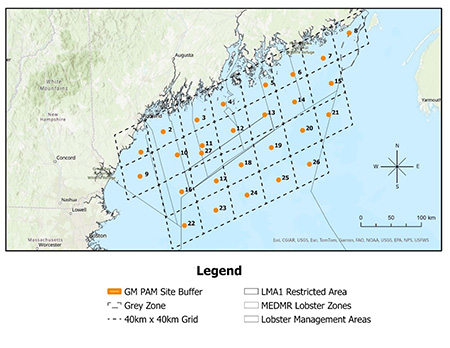With funding from the Consolidated Appropriations Act, 2023 DMR will significantly expand North Atlantic right whale (NARW) monitoring in the Gulf of Maine (GOM). The GOM, particularly in waters off the coast of Maine, is an under-sampled and under-researched area, resulting in high uncertainty in existing models that determine risk of serious injury and mortality to NARWs by lobster gear. It is this uncertainty that has driven NOAA to make assumptions that have been so problematic for Maine's lobster industry. This program aims to address critical data gaps regarding the presence of NARWs in the GOM with passive acoustic monitoring, boat-based surveys, aerial surveys, and zooplankton monitoring. The expanded monitoring work will give Maine DMR the data we need to appropriately address future federal regulations.
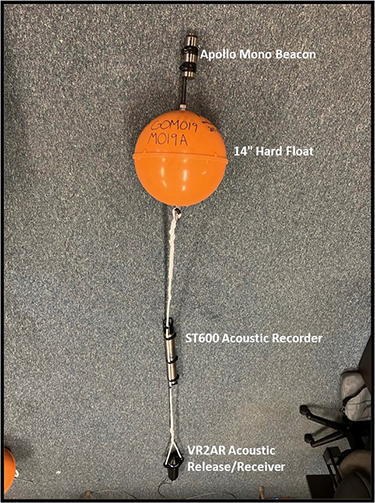
DMR will conduct archival passive acoustic monitoring (PAM) at 27 sites throughout Maine’s portion of Lobster Management Area 1 (LMA1) and parts of LMA3.
These will be in addition to eight PAM moorings deployed since 2020 in collaboration with Northeast Fisheries Science Center and the University of Maine.
Pictured is an archival PAM mooring. The 14” hard float provides buoyancy so that once the anchor is released the PAM mooring will float to the surface and DMR can retrieve it. The Apollo Mono beacon sends the latitude and longitude of the PAM mooring via satellite whenever it is at the surface. DMR will use these to track down any PAM moorings, including those that may have been dislodged and come to the surface earlier than expected. The ST600 acoustic recorder is the instrument DMR will use to record ocean sounds at each PAM site. DMR will review these recordings for North Atlantic right whale (NARW) vocalizations, which will indicate whale presence within, on average, a 10-kilometer radius of the PAM site. The VR2AR is an acoustic release and receiver that releases an anchor securing the PAM mooring to the ocean floor so that DMR can retrieve the PAM. The VR2AR release/receiver also detects acoustically tagged fish within a certain distance of the receiver.
In addition to broadscale monitoring with PAM moorings, DMR will investigate a passive acoustic tracking array. The tracking array will consist of five to seven PAM moorings that are centered around the Gulf of Maine Floating Offshore Wind Research Array. This higher density of PAM sites should allow for the location and tracking of vocalizing whales. Data from the tracking array could potentially lead to more detailed information, including estimated number of calling whales within the detection range of the acoustic recorder, vocalization rates, acoustic density estimates, and the depths at which whales vocalize. Four additional archival passive acoustic recorders will be placed in the corners of the grid cell to expand spatial coverage.
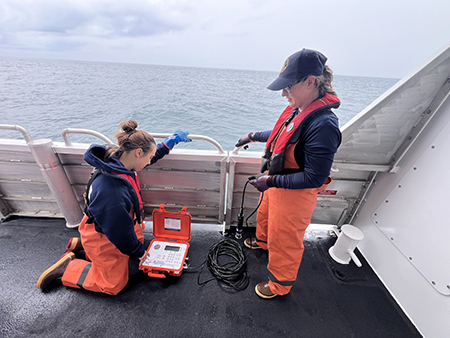
PAM moorings will be swapped out approximately every four months and data downloaded. Once the acoustic recordings have been analyzed by DMR science staff, the NARW acoustic detection data will be uploaded to NOAA Fisheries Northeast Fisheries Science Center’s Passive Acoustic Cetacean Map, a publicly available portal for viewing PAM detections over different periods of time and areas.
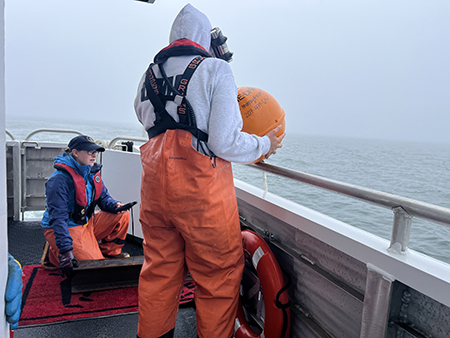
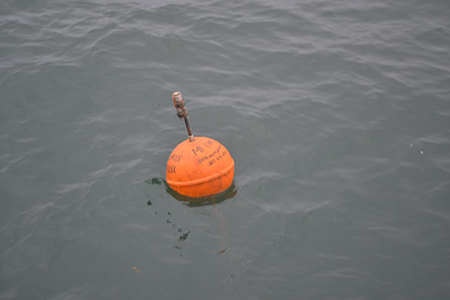
If a harvester accidentally entangles a PAM mooring, please contact anita.murray@maine.gov for instructions on returning it to DMR.
Future plans call for near real-time PAM monitoring to support the development of dynamic management in which temporary closures are only established in specific areas if whales are detected.
